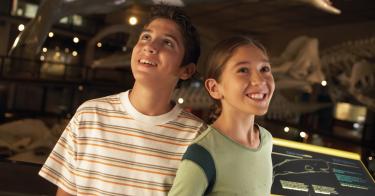New York City has some of the finest educational institutions in the world. I’m not referring to its universities, like Columbia or NYU, and I am certainly not referring to its public schools. I’m talking about its cultural institutions—its art museums, theaters, symphonies, dance companies and historical centers, both natural and human. If the city’s public schools would make full use of these world-class assets, the quality of education might well improve.
A new study I co-authored with Heidi Erickson and Angela Watson in the Journal of Human Resources provides rigorous support for having schools draw more upon the educational strengths of cultural institutions. We randomly assigned more than 1,000 fourth- and fifth-grade students in Atlanta to one of two groups.
The “treatment” group went on three culturally enriching field trips per year, visiting the art museum, the symphony and the theater at the city’s Woodruff Arts Center. Some of these students repeated these excursions the following year for a total of six field trips. Another group of students served as a control; they didn’t go on these field trips.
When we compared outcomes for the students who received three or six culturally enriching field trips versus those who were in the control, we found significant educational benefits. Those who went on multiple trips had fewer behavioral infractions, were less likely to be absent from school, scored higher on end-of-grade exams and received higher course grades. Amazingly, these benefits endured and were most visible when students were in middle school—sometimes two or three years later.
>>> Florida’s Parental Rights in Education Bill Hits Target: Gender Ideology Harms Kids
Perhaps our findings aren’t surprising. Many parents, particularly those in the middle and upper-class who have the time, money and resources, have long taken advantage of culturally enriching experiences. They have grasped the inherent benefits in art and culture in helping their children appreciate what is good, true and beautiful about the world.
Dragging kids to places they might not like at first can be a chore, but these parents see it as essential for preparing their children to contribute to a decent and civilized society. Our research confirms the wisdom of these parents by showing that the students assigned by lottery to have culturally enriching field trips are more likely to be tolerant and eager to visit the arts again in the future. Cultural institutions help develop civilized people, and now we also have evidence that culturally enriching field trips help improve a students’ academic performance and behavior at school.
Why so? The education scholar, E.D. Hirsch, has long argued that, for children to learn how to read, they really need to acquire the content knowledge and cultural literacy to understand what they are reading about.
To explain: You can sound out all of the words of the poem, “Casey at the Bat,” but if you have never seen a baseball game it would all sound like Lewis Carroll’s absurdist poem, “Jabberwocky.” The words “pitcher,” “safe” and “strike” have a particular meaning in baseball that can only be comprehended if the reader possesses relevant cultural literacy.
The same is true more generally with learning to read for comprehension, Hirsch has noted. Students better understand what it means to call something surreal after seeing Dali paintings at the Met, that something is as big as a whale after seeing the blue whale hanging in the American Museum of Natural History, or that a story is missing its third act after going to the theater. These cultural experiences help provide the cultural literacy students need to thrive in their academic literacy.
>>> Mackenzie Scott Believes Schools Should Raise Your Kids
This, we believe, is why we observed improved test scores and class grades in the students who went on more culturally enriching field trips. And when students understand what they are being taught in school better, they also tend to be better behaved and more eager to attend, which we also observed more frequently among students who went on the trips.
Of course, simply taking students to museums, the symphony or the theater is no guarantee of academic success if the content they see is of low quality or disconnected from what they should be learning in school. The Woodruff Arts Center did a superb job with the field trips we studied. But the same can be true of New York’s world-class cultural institutions, if only the city’s schools take full advantage of them.
The pandemic should not keep schools from providing these essential cultural experiences forever. If schools make culturally-enriching field trips an integral part of the education experience, all students—especially those whose parents have a harder time accessing these experiences on their own—would benefit.
This piece originally appeared in New York Daily News




